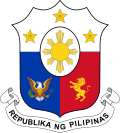| |||||||||||||
Do you want President Marcos to continue beyond 1973 and finish the reforms he has initiated under the martial law? | |||||||||||||
| Outcome | Proposal carried | ||||||||||||
|---|---|---|---|---|---|---|---|---|---|---|---|---|---|
| Results | |||||||||||||
| |||||||||||||
 |
|---|
The 1973 Philippine martial law referendum was a national referendum in which the citizens' assemblies voted for:
Contents
- The ratification of the 1973 Constitution
- The suspension of the convening of the Interim National Assembly provided in the transitory provisions of the 1973 Constitution
- The continuation of martial law
The referendum was set from July 27 to July 28, 1973.